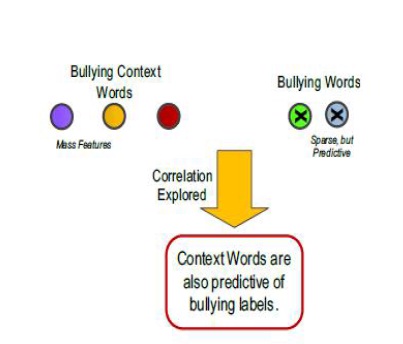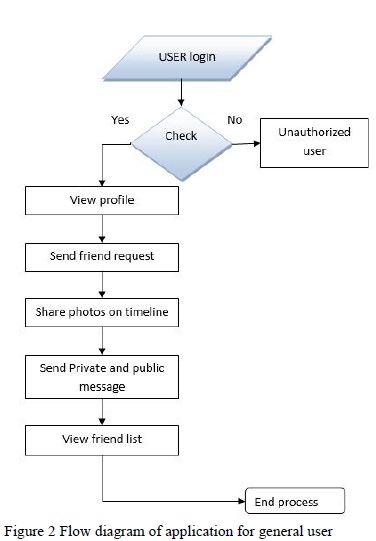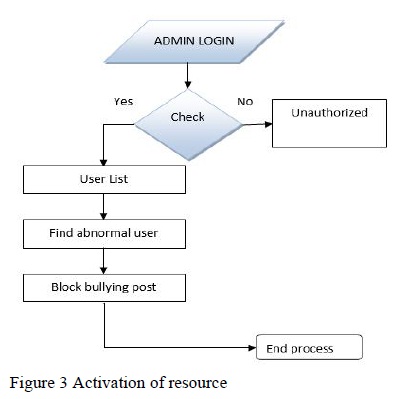





Published on Apr 02, 2024
As a side effect of increasingly popular social media, cyberbullying has emerged as a serious problem afflicting children, adolescents and young adults. Machine learning techniques make automatic detection of bullying messages in social media possible and this could help to construct a healthy and safe social media environment. In this meaningful research area, one critical issue is robust and discriminative numerical representation learning of text messages.
Our method named Semantic-Enhanced Marginalized Denoising Auto-Encoder (smSDA) is developed via semantic extension of the popular deep learning model stacked denoising auto encoder. The semantic extension consists of semantic dropout noise and sparsity constraints, where the semantic dropout noise is designed based on domain knowledge and the word embedding technique . Our proposed method can exploit the hidden feature structure of bullying information and learn a robust and discriminative representation of text.
Social media may have some side effects such as cyberbullying, which may have negative impacts on the life of people, especially children and teenagers. The objective of this project is to develop a social media network like Facebook with some functionalities and demonstrate how cyberbullying can be prevented on social media.
Using various social media applications, people can experience convenient communication and enjoy enormous information. However, social media may have some side effects such as cyberbullying, which may have negative impacts on the life of people, especially children and teenagers. Cyberbullying is the use of technology like the internet, email, cell phones, social media or pictures to harass, threaten, embarrass, or target a person. Usually, it occurs among young people. But when an adult is involved, it may mean cyber harassment or cyber stalking, a crime that can have legal consequences and include imprisonment.
It includes
• Sending inappropriate text messages.
• Posting statements online that are vulgar or unacceptable.
• Sending or posting pictures that are not permitted by you.
• Making negative comments.
• Blackmailing with certain demands.
• Stalking and use of intimidation.
• Threats of violence or death.
• Sexually explicit photos or descriptions, which is considered pornography.
• Secretly-recorded photos or videos that were taken without the subject’s knowledge.
• Hate-related communications or actions


The details of the workflows are as explained below.
1) The user logs on to the web portal.
2) The user selects the menu to view a profile and sends a friend request
3) After friend request is approved, photos and messages can be shared.
4) When sharing private and public message and posting on the wall, check for bullying words.
The details of the workflows are as explained below.
1) The admin logs on to the web portal.
2) The admin selects the menu and finds abnormal user
3) The admin can block bullying post

The proposed OSN Cyberbullying system is designed to prevent Cyberbullying in Social media space. By designing semantic dropout noise and enforcing sparsity, we have developed semantic-enhanced marginalized denoising autoencoder as a specialized representation learning model for cyberbullying detection. Also, the design is verified for the functional correctness, code and functional coverage numbers are used for measuring the verification activity.
[1] Y. Bengio, A. Courville, and P. Vincent, “Representation learning: A review and new perspectives,” Pattern Analysis and Machine Intelligence, IEEE Transactions on, vol. 35, no. 8, pp. 1798–1828, 2013.
[2] A. M. Kaplan and M. Haenlein, “Users of the world, unite! The challenges and opportunities of social media,” Business horizons, vol. 53, no. 1, pp. 59–68, 2010.
[3] R. M. Kowalski, G. W. Giumetti, A. N. Schroeder, and M. R.Lattanner, “Bullying in the digital age: A critical review and metaanalysis of cyberbullying research among youth.” 2014.
[4] B. K. Biggs, J. M. Nelson, and M. L. Sampilo, “Peer relations in the anxiety–depression link: Test of a mediation model,” Anxiety, Stress, & Coping, vol. 23, no. 4, pp. 431–447, 2010.
| Are you interested in this topic.Then mail to us immediately to get the full report.
email :- contactv2@gmail.com |